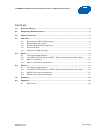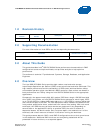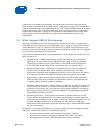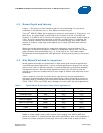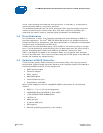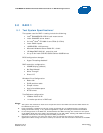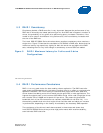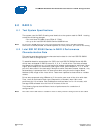
Intel
SSD DC S3500 Workload Characterization in RAID Configurations
December 2013 White Paper
329903-001US 5
1.0 Revision History
Document
Number
Revision
Number
Description Revision Date
329903 001
Initial release
December 2013
2.0 Supporting Documentation
For more information on Intel SSDs, see the corresponding documentation.
Document Document No./Location
Intel
®
Solid-State Drive DC S3500 Series Product Specification 328860
3.0 About This Guide
This guide describes Intel
®
SSD DC S3500 Series performance characteristics in RAID
configurations across multiple workloads, and provides analysis to help optimize
performance.
The audience is technical IT professionals: Systems, Storage, Database, and Application
Engineers.
4.0 Overview
The Intel SSD DC S3500 Series provides high random read and write storage
Input/Output Operations per Second (IOPS) across mixed read and write workloads. This
high random performance and the consistency of IOPS under workload deliver robust
and scalable operation when used behind a RAID controller. Data centers can benefit in
both performance and TCO by using the Intel SSD DC S3500 Series in the appropriate
applications.
Compared to the approximately 200-300 random IOPS that a single 15K SAS hard disk
drive (HDD) can provide, an Intel SSD DC S3500 Series operates at much higher IOPS;
up to 75,000 IOPS for random 4KB reads and up to 11,500 IOPS for random 4KB writes,
over the entire span of the SSD. The Intel SSD performance numbers are based on the
Intel product specification sheet, as derived from internal Intel testing. With real-world
workloads, the IOPS that any particular device can produce will vary depending on
several factors: the application’s ability to produce IOPS, the ratio of random to
sequential access, the block transfer size, the queue depth, the read/write mix of the
workload, and overall resource utilization in the server running the workload.
This guide presents data for RAID 1 and RAID 5 configurations due to their prominence
in the datacenter. Additional RAID levels are currently being tested and will be
presented in future revisions, or as separate papers.





